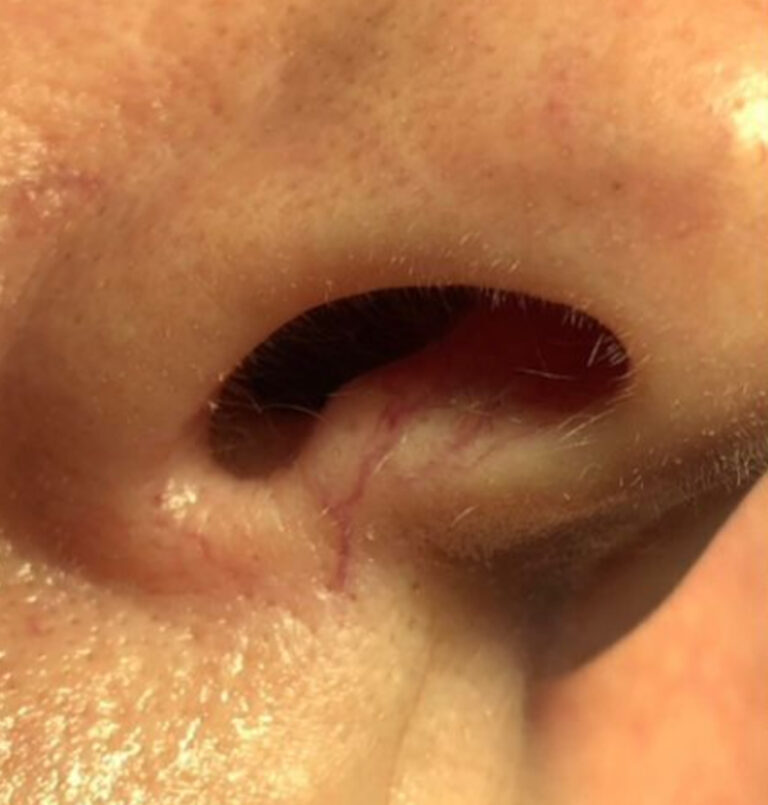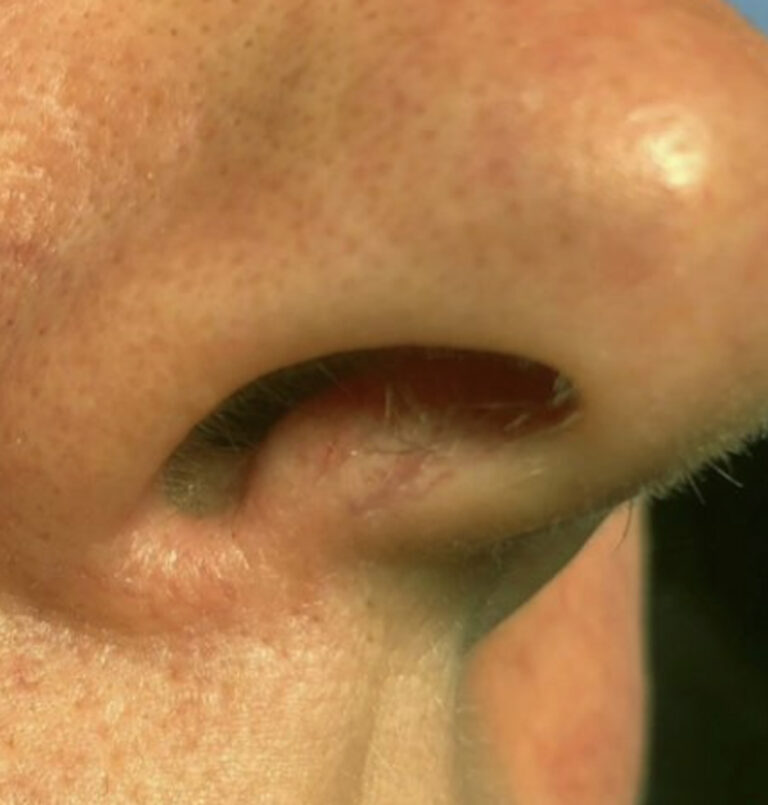There are many reasons why your face may turn—and remain—red. Broken blood vessels or spider veins from sun damage, as well as acne, can also cause facial redness. Broken or enlarged blood vessels (facial spider veins, angiomas, telangiectasia) are commonly seen on the face, neck, chest, and legs. Rosacea, a common skin condition, causes blushing or flushing and visible blood vessels in your face. It often begins with a tendency to flush or blush easily. If the condition progresses, you many notice that the redness on your face lasts longer—or never fades. Currently, 16 million Americans are affected by rosacea.
The Treatment
The Art of Skin Dermatology is able to combat facial redness with a variety of treatments. The state-of-the-art laser we have is the gold standard for targeting red spots and facial veins. Laser treatments use focused light from a laser to shrink the tiny blood vessels below the skin, reduce the appearance of vascular lesions.
Lasers can precisely target the vascular lesion without damaging the surrounding area. With this treatment, the redness is decreased and stays faded. Although, here is always a chance new lesions could form with time.
With this treatment, you are likely to be free from the bothersome vascular spots that are cosmetically unappealing!
Before/After
Similar Services
Rosacea
Rosacea causes redness and often, red, acne-like bumps on the face. The redness can spread to the forehead and chin. Even the ears, chest and back can be red all the time. Yet rosacea can cause more than just redness. Over time, people with rosacea often see permanent redness in the center of their face—from visible blood vessels and thickening skin and bumpy texture, to red and irritated eyes, swollen eyelids and what looks like a sty.
Rosacea, a persistent inflammatory condition affecting the skin on the face, presents itself initially as a sunburn or blushing that refuses to fade away. If left untreated, it gradually worsens, leading to additional symptoms and increasing discomfort.
Cherry Angioma
A commonly found type of angioma, known as cherry angioma, is a harmless skin growth resembling a mole. It occurs due to an excessive growth of tiny blood vessels called capillaries. Typically, cherry angiomas are more prevalent in individuals above the age of 30 and tend to increase in number as one gets older. However, if a sudden appearance of numerous cherry angiomas takes place, it may indicate the presence of another type of angioma that necessitates immediate medical examination by a dermatologist.
Cherry angiomas are characterized by their small, smooth, and vibrant red bumps, which can range in size from as tiny as a pinhead to as large as a quarter-inch in diameter. In most cases, these growths do not require any treatment. Nevertheless, removal of cherry angiomas might be recommended if the patient finds them aesthetically displeasing or if they are prone to bleeding. The removal procedure can be carried out using laser excision, a shave biopsy, or electrocautery, but it is important to note that scarring may occur as a result.
Let’s connect.
Have questions? Want to schedule an appointment? Simply complete the form and we’ll get back to you within 24 hours.



